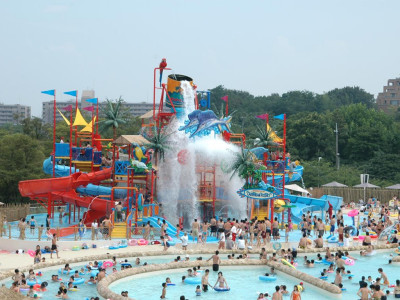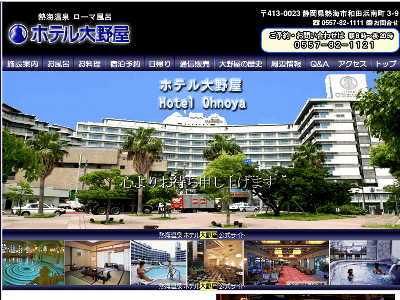100 years since the birth of Japan's first amusement park, the history of Japan's theme park · amusement park industry

ByMohammad Bahareth
It is 100 years since this was the first time in Japan "Takarazuka Shinkansen" amusement park. I summarized the history of the 100-year history of the Japanese theme park, with the end of the Second World War, the postwar reconstruction period, the bubble period, to the present.
◆ The birth of Takarazuka Shin Onsen

In 1897 the Sakura Railway (now JR Takarazuka Line), in 1910 Minohira Arima Electric Orbit Co., Ltd. (present Hankyu Corporation) established. Takarazuka Onsen has developed rapidly since these trains started running. In 1911,"Takarazuka Shinkansen"As a marble built large public bath, a modern entertainment hall was established. This is regarded as the forerunner of the amusement park in Japan.
In addition, as an amusement park in the Meiji / Taisho Period, in Osaka in 1912"Hirakata Park", In Tokyo in 1922"Arakawa amusement park"In 1926"Toshima-en (current · Toshiman)"And others were established. Both are amusement parks surviving to the present.
◆ Railway company development in front of the station

In 1920"Skyland Ikoma"From the opening of business, until the 1950s after the end of the war, the establishment of an amusement park temporarily discontinues. In time when the signs of reconstruction began to appear, in 1950"Seibuen Yuenchi"When"Koshien Hanshin Park"It started business.
In 1955, the word "not after the war" was written in the Economic White Paper and it became a buzzword, from which the opening rush of large amusement parks will continue from the 1960s and 1970s. Korakuen Amusement Park (now Tokyo Dome City Attractions), Fujikyu Highland, Joban Hawaiian Center (now Spa Resort Hawaiians) was also opened at this time.
However, many of the amusement parks opened during this period were closed, and the ones that were closed at major amusement parks established by 1975 from 1955 are as follows.
· 55 years Osaka"Sayama park"→ closed in April 2000
· Tochigi 60 years"Oyama Yuenchi"→ Closed in March 2005
· Nara in 1961"Nara Dream Land"→ closed in August 2006
· 64 years Kyoto"Fushimi-Momyama Castle Castle Land"→ Closed in January 2003, in the athletic park
· 64 years Kanagawa"Yokohama Dream Land"→ Closed in February 2002, in the park · cemetery
· Osaka in 1972"Exporland"→ closed in 2009
· Tochigi in 1974"Western village"→ Closed February 2007
· Shizuoka in 1974"Odakyu Gotemba Family land"→ closed in September 1999, at Gotemba Premium Outlet
· 75 years Okinawa"Okinawa Expoland"→ Closed in March 2000
By the way, in JapanTheme parkIt is said to be the founder of"Meiji Village"It was opened in 1965.
◆ Tokyo Disney land opening

ByLin 1000. tw
1983"Tokyo Disneyland"When"Nagasaki Holland Village"It started business. Due to the success of Tokyo Disney Land, the theme park establishment rush will occur from here. Here too a large number of theme parks were constructed, and it became closed. Closed at the main theme parks constructed during this period, or those who fell into business slump are as follows.
· Nagasaki in 1983"Nagasaki Holland Village"→ It changes to Cath Village closed in October 2001, but this also closed in October 2005.
· Hokkaido, 1989"Kingdom Kingdom"→ Closed February 2007
· 1990 Hokkaido"Canadian World"→ closed in October 1997, in the municipal park
· 90 years Tokyo"Tokyo Sesame Place"→ Closed in December 2006
· 1992 Hiroshima"Kure Port Pierland"→ closed in 1998, in the public park
· Nagasaki in 1993"Huis Ten Bosch"→ Application for application of corporate reorganization law 2003
· 1993 Niigata"Niigata Russian Village"→ Closed November 2003
· 1995 Fukuoka"Nable Land"→ closed in December 1998
· 1995 Kanagawa"Kamakura Cinema Word"→ closed in December 1998
· Ishikawa 96"Kaga Hyundai Age Village"→ Closed in January 2006
· 1996 Niigata"Kashiwazaki Turkish Cultural Village"→ Closed September 2004
· 1997 Osaka"Festival Gate"→ Closed September 2004
· 97 Okayama"Kurashiki Tivoli Park"→ closed in December 2008
· Yamanashi in 1997"Fuji Gulliver Kingdom"→ closed in October 2001
◆ 1987Revised Resort Act (Comprehensive Recreational Area Development Law)
One of the reasons for promoting such construction rush is the "Comprehensive Recreational Area Development Law" called the revised resort law. This law was enacted in 1987.
As for the contents, preferential measures such as taxation support and government finance institution loan can be obtained in the construction of resort facilities based on the plan approved by the country, and most prefectures are planning to construct resort facilities I raised my hand. However, due to plans ignoring demand and the fact that the development menu was too uniform, Miyazaki's"Seagaia"I left a failure example such as.
◆ "Tokyo DisneySea" "USJ" opened, To the east and west strong era
In 2001,"Tokyo Disney Sea"When"Universal Studios Japan (USJ)"Will open. From the first year of operation, the USJ showed the same attractiveness as when opening Tokyo Disneyland, established the status of "Tokyo Disneyland in the East, USJ in the West".
However, due to the emergence of these two biggest headquarters, the regional theme park that was tight even just after the collapse of the bubble resulted in further deprivation of customers, and further selection was advanced in the 2000s.
◆ Success in niche markets, Kidzania's strategy

Among them, it is something that shows unique success"Kidzania"is. It is a "vocational experience-oriented theme park for children" business environment, allowing you to simulate 80 major occupations for pre-primary school and primary school students. Adults can not basically enter each pavilion, they will visit from outside or wait at the parents lounge.
Asahi Shimbun company, Idemitsu Kosan, integrated security guarantee (ALSOK) etc. are sponsored companies, and these companies are exhibiting pavilions in Kidzania. Kidzania Tokyo recorded the number of visitors of 970,000 in 2007 and became a theme park of the same scale as home country Mexico.
Thus, in the 100 years of amusement parks and theme parks in Japan, it was a history of depression that, through construction rush, where strong customer content and capital expenditure can survive. In the future Japanese market where it can not expect economic development to rise sharply, seeking new concepts like "Kidzania" is required.
◆ References
"New · Japanese theme park research"Author: Kazuo Okuno Publication: Bamboo Museum
"Theory Park Industry Theory"Author: Nakajima Erikan: Sanjosha
Related Posts:
in Note, Posted by darkhorse_log







